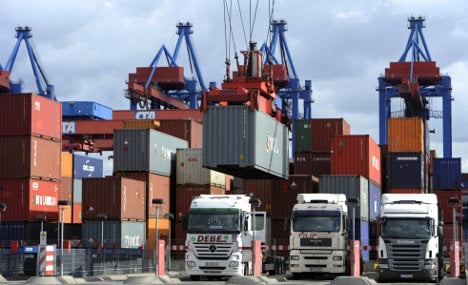Compared with December, however, exports fell 1.0 percent although analysts said the drop was likely to be temporary and noted a landmark shift in shipments to China.
“This setback at the start of the year is unlikely to change the fact that exports will remain the major driver of the German upswing this year,” Commerzbank analyst Ulrike Rondorf said.
Imports in January compared with December, meanwhile, were up 2.3 percent.
On an annual basis to January, German exports totalled €78.5 billion ($108.7 billion), with imports up 24.1 percent on the year to €68.4 billion, producing a trade surplus of €10.1 billion, up from €8.1 billion in January 2010, the Destatis statistics office said.
The trade surplus was below an average analyst forecast of €12 billion compiled by Dow Jones Newswires.
Analysts said the month-on-month decline in exports should not mark the start of a trend unless a freight train drivers strike becomes entrenched and a stronger euro weighs on the competitive position of German goods.
Meanwhile, “for the first time ever, German companies shipped more goods to China (including Hong Kong) than to the US,” UniCredit chief German economist Andreas Rees noted.
“According to our calculations, the export share to China including Hong Kong was 6.6 percent in December 2010 … compared to 6.5 percent to the US.”
He called the shift “a turning point in German economic history” but also noted that any cooling of the Chinese economy would quickly affect Germany as well.
Exports to the United States and especially other members of the 17-nation eurozone should help Germany continue to grow, however.
Some of Germany’s eurozone partners charge that its persistent trade surplus comes at their expense because the country does not consume enough of their goods, but the rise in imports this time was likely due to higher oil prices.
Figures provided by the German central bank showed the current account, a broader picture of trade in goods and services along with financial transfers, had a surplus of €7.2 billion in January.
One year earlier it stood at 5.6 billion euros.
AFP/adn



 Please whitelist us to continue reading.
Please whitelist us to continue reading.
Member comments